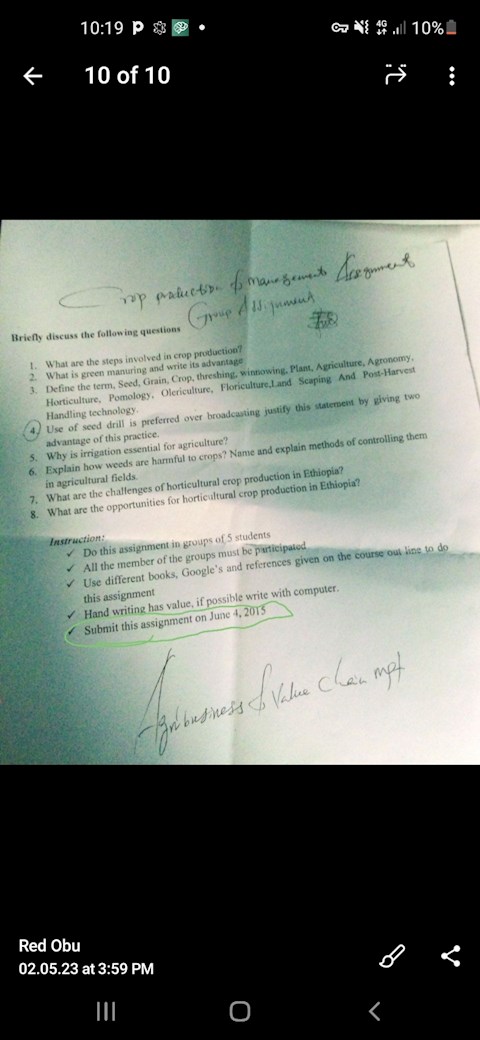
Tare Elias
May 14, 2023
What are the steps involve crop production?

1 answer
Sort By
Anonymous
May 15, 2023
Crop production involves a number of steps, which may vary depending on the specific crop being grown and the conditions of the environment. However, the following are the general steps involved in crop production:
- Land preparation: The first step in crop production is to prepare the land by removing any weeds, rocks, or debris that may interfere with planting or harvesting. This may involve plowing, tilling, or using herbicides.
- Planting: Once the land is prepared, the crop seeds are planted. Depending on the crop, this may be done by hand or with the use of machineries such as planters or seed drills.
- Irrigation: Crops need water to grow, so irrigation is an important step in crop production. This may involve watering the plants manually or through the use of irrigation systems.
- Fertilization: Crops require nutrients to grow, so fertilization is an important step in crop production. This may involve applying organic or synthetic fertilizers to the soil.
- Pest management: Crops are often vulnerable to pests such as insects, rodents, and fungi, so pest management is an important step in crop production. This may involve the use of pesticides, natural predators, or other methods.
- Weed control: Weeds can compete with crops for water and nutrients, so weed control is an important step in crop production. This may involve using herbicides or mechanical methods such as hoeing or hand weeding.
- Harvesting: Once the crops are mature, they are harvested. This may involve using machinery such as combines or harvesting by hand.
- Post-harvest processing: After harvesting, the crops may be processed further to remove any remaining debris or unwanted parts. This may involve cleaning, sorting, grading, or packaging.
- Storage and transportation: Finally, the crops are stored and transported to their final destination. This may involve the use of refrigeration or other preservation methods to prevent spoilage.
1